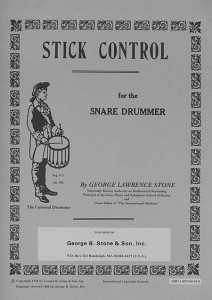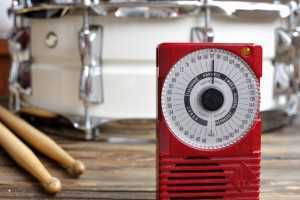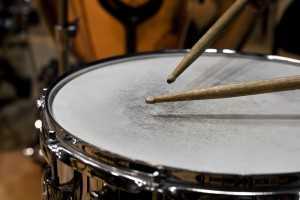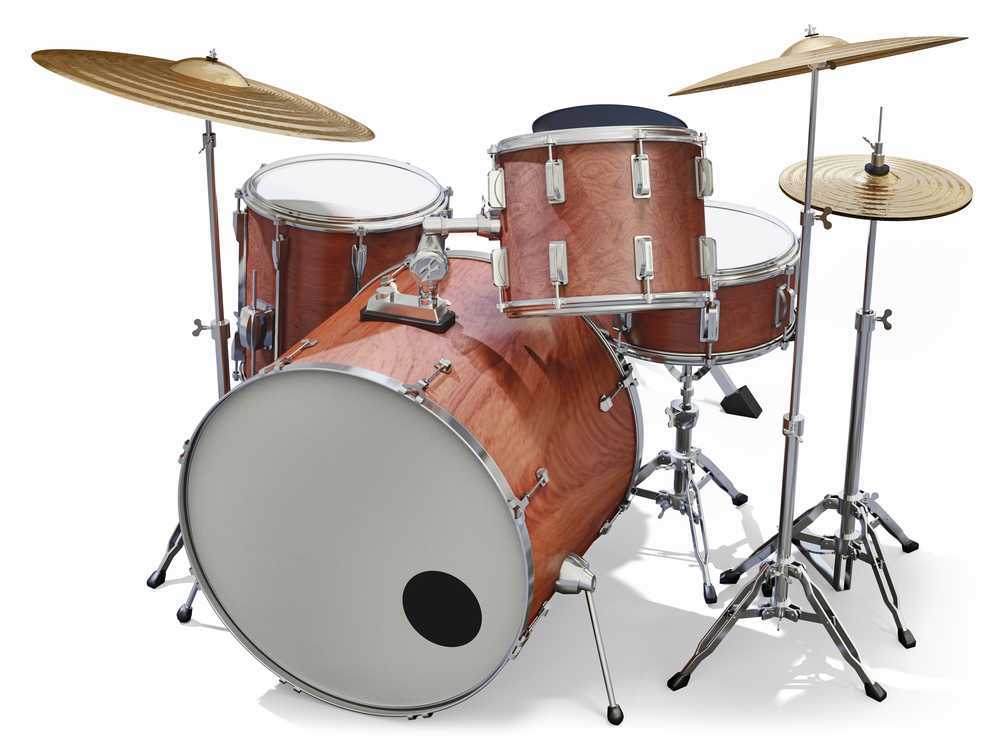One of the most enduring and venerated method books for drummers is Stick Control for the Snare Drummer by George Lawrence Stone. First published in 1935, it has come to be commonly  referred to as ‘the drummer’s Bible’, and is used practically universally by drummers and percussionists of all stripes; from rock, jazz, and other drummers, to classical percussionists. Why is it so enduringly popular? There are a number of reasons, but chief among them are its thoroughness in strengthening core technique, and its wide range of application and flexibility. Its usefulness goes far beyond snare drumming (as the title suggests), and is especially useful- in virtually limitless ways- when applied to the drum set. We use Stick Control because it is unsurpassed in its power to increase hand independence, in strengthening the non-dominant hand, and in many ways it gives us the tools-both technically and creatively- to play exactly what we intend to. Most drummers and percussionists consider it indispensable and use it throughout their career. In this article, I am going to speak of it primarily in terms of its application to the drum set.
referred to as ‘the drummer’s Bible’, and is used practically universally by drummers and percussionists of all stripes; from rock, jazz, and other drummers, to classical percussionists. Why is it so enduringly popular? There are a number of reasons, but chief among them are its thoroughness in strengthening core technique, and its wide range of application and flexibility. Its usefulness goes far beyond snare drumming (as the title suggests), and is especially useful- in virtually limitless ways- when applied to the drum set. We use Stick Control because it is unsurpassed in its power to increase hand independence, in strengthening the non-dominant hand, and in many ways it gives us the tools-both technically and creatively- to play exactly what we intend to. Most drummers and percussionists consider it indispensable and use it throughout their career. In this article, I am going to speak of it primarily in terms of its application to the drum set.
What is Stick Control?
Stick Control is at first deceptively simple: an exhaustive, progressive series of sticking exercises (sticking being the pattern of strokes between the hands), which begins with a series of purely 8th note passages, and gradually adds a variety of rhythmic challenges and some rudiments as well (for a printable version of the Percussive Arts Society standard rudiments, click here). This simplicity (and the necessary repetition in using it correctly) can lead some students to feel that it is dry, even boring; but properly implemented, it can be everything but.
Once one has discovered the enormously variable ways in which it can be used, it quickly becomes an adventure in not only strengthening technique, but in expanding the drummer’s palette.
General tips for practicing Stick Control
Page four of Stick Control gives excellent tips on how to use the book, but I will add a few ideas, and expand on some others. Of primary importance is use your metronome! Each exercise should be practiced at a variety of tempos. The reasons for mastering a sticking or other exercise to an increasingly rapid tempo are obvious; what is often less obvious- especially to the beginner- is how challenging it is to play cleanly, smoothly, and accurately at slow speeds. In other words, don’t stop practicing slowly just because you feel like you’re shredding! Furthermore, there are a number of exercises utilizing triplets (and later, other tuplets), and it is imperative that a metronome be used to ensure learning accurate execution of these.
 Of course, Stone’s recommendation that each also be practiced “open to closed”, or in other words, beginning an exercise slowly and gradually increasing speed to your maximum and then back again- which must be done without the metronome- is extremely valuable.
Of course, Stone’s recommendation that each also be practiced “open to closed”, or in other words, beginning an exercise slowly and gradually increasing speed to your maximum and then back again- which must be done without the metronome- is extremely valuable.
Similarly, each exercise should be practiced at a wide variety of dynamics, and for similar reasons: it is far more difficult for the majority of beginners to play very softly than otherwise, and a working drummer can be certain she will be called upon to do so at some point- probably sooner than later! Even for more experienced players, quietly executing the more intricate exercises- or even the simplest ones at rapid tempos- will be challenging.
Stone suggests practicing each exercise in repetitions of twenty (i.e., twenty times without stopping at the given tempo and dynamic). I will join other voices in suggesting that choosing instead a period of time- say two minutes- for each may be more effective, on the grounds that actually counting all those repetitions may be more of a distraction than anything.
While the book is designed to rigorously exercise the non-dominant hand, I would go further and suggest that those exercises that lead with whichever is your weaker hand be afforded more practice time. Your weaker hand is more than likely to always be as such, but the goal is to minimize the difference!
Ok, there’s the dry stuff- let’s get on to the fun stuff- expanding Stick Control beyond the snare drum into the whole drum set!
Some Methods of Applying Stick Control to the Drum Set
Applying the following techniques will greatly expand not only your drumming palette, but your limb independence as well. With my own practice as well as with my students, I take a number of different approaches. For the purposes of this article, I will put them into three main categories:
different approaches. For the purposes of this article, I will put them into three main categories:
- Adding common foot patterns beneath the exercises
- Incorporating other elements of the set in the hands
- Substituting the kick for one of the hands in the sticking patterns while maintaining a ride pattern on the high hat or ride cymbal
All of the following examples can be practically applied in a number of ways: in creating or varying basic rock, jazz, or funk (and beyond) patterns, in creating fills, and in soloing.
We’ll look at just one basic exercise in Stick Control and how we can apply these three methods (understanding that almost all of the book- if not in fact all- can be used in this way).
Exercise #5 is famously the rudiment known as the paradiddle (minus the standard accents):
Looking at our 1st category of variations, let’s add just a couple of simple foot (bass drum and high hat) patterns:
Of course, there is no limit to the number of foot patterns that can be added- experiment!
The 2nd category is even more wide open (and can of course be further combined with the first). Here are a couple of possibilities.
- Right hand on HH or ride cymbal, left hand on snare:
- Both hands moving between snare and toms (rack tom on top space, floor tom on 2nd line, snare still on 3rd space):
The possibilities are endless. Again, experiment!
Finally, the 3rd category:
Or:
When we consider changing the ride pattern, or incorporating the toms, the possibilities for enriching variation are truly endless.
Practicing Stick Control in these ways will not only strengthen your technique, it will open up the world of possibilities for your drumming. The more varied ways you use it, the more your palette will expand, and the more you will be ready for any musical situation the band throws your way. If you find ever find yourself in a rut- falling back on fills and patterns you’ve grown too comfortable with- using Stick Control with these techniques can be a great help in reinvigorating your playing. And don’t stop with these suggestions- adding accents, swing, rimshots, etc., can even further the possibilities.













